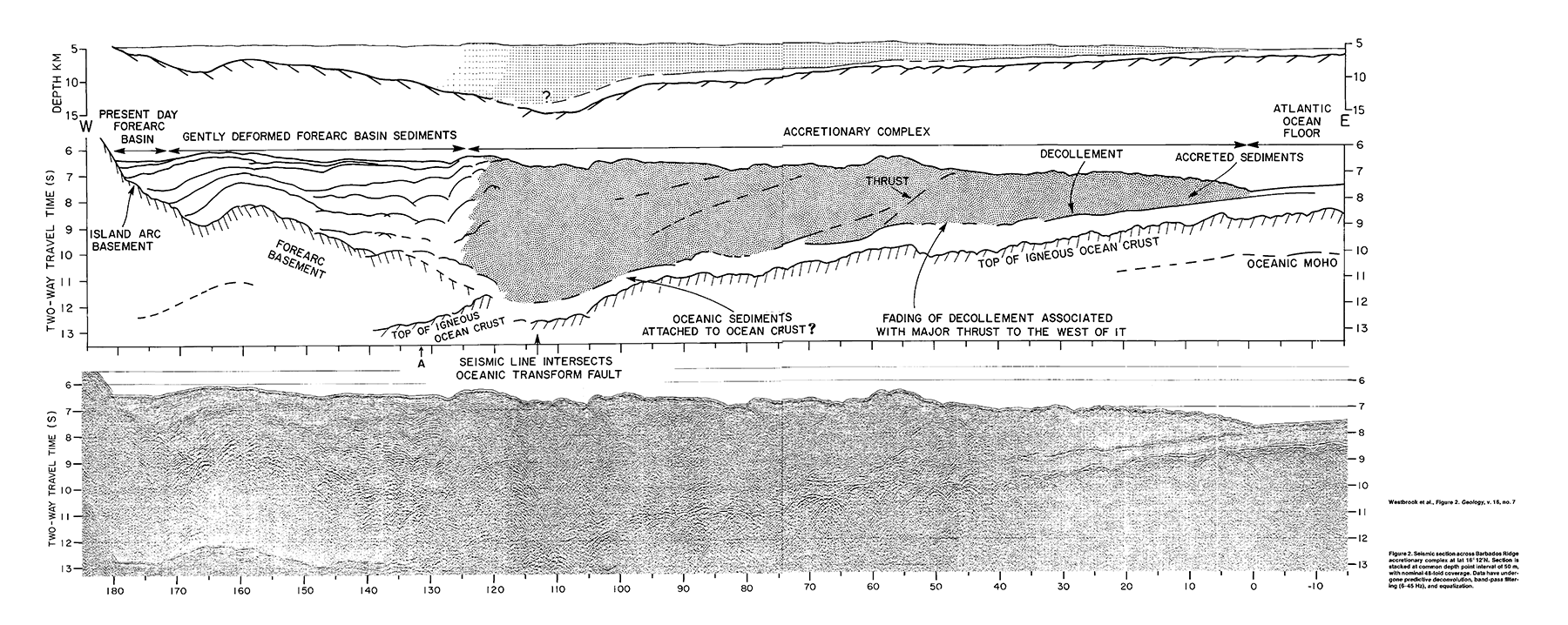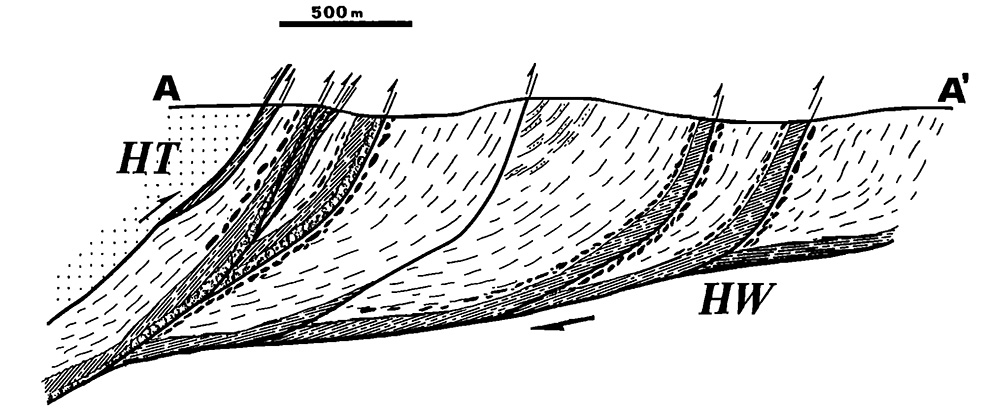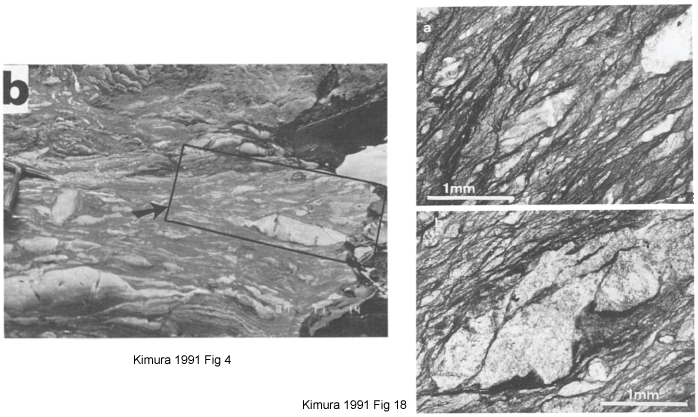
One of the first active subduction trenches to be studied in detail was
Barbados. In this interpreted seismic section
published by Westbrook et al., (1988), the
general structure of the accretionary wedge is displayed. First, it is clear
that the plate boundary decollement forms somewhere within the incoming
sediment, so the uppermost layers are off-scraped.


This figure shows the seismic transect - note, MAJOR vertical exaggeration - and the interpretation of frontal accreted sections near the toe, and an underplated section under the modern wedge.
Kimura and Mukai (1991) documented underplated units in the Shimanto Belt,
an accretionary complex of Miocene age in SW Japan.

The geologic map of the
area shows a series of parallel, landward-dipping thrust faults with melange along their traces.

In cross section, you can see that the parallel thrusts are imbricates with melange
along either the footwall, the hanging wall or both. The comparison of outcrop-scale and thin section-scale
structures shows that the melange has similar characteristics across a variety of scales:
